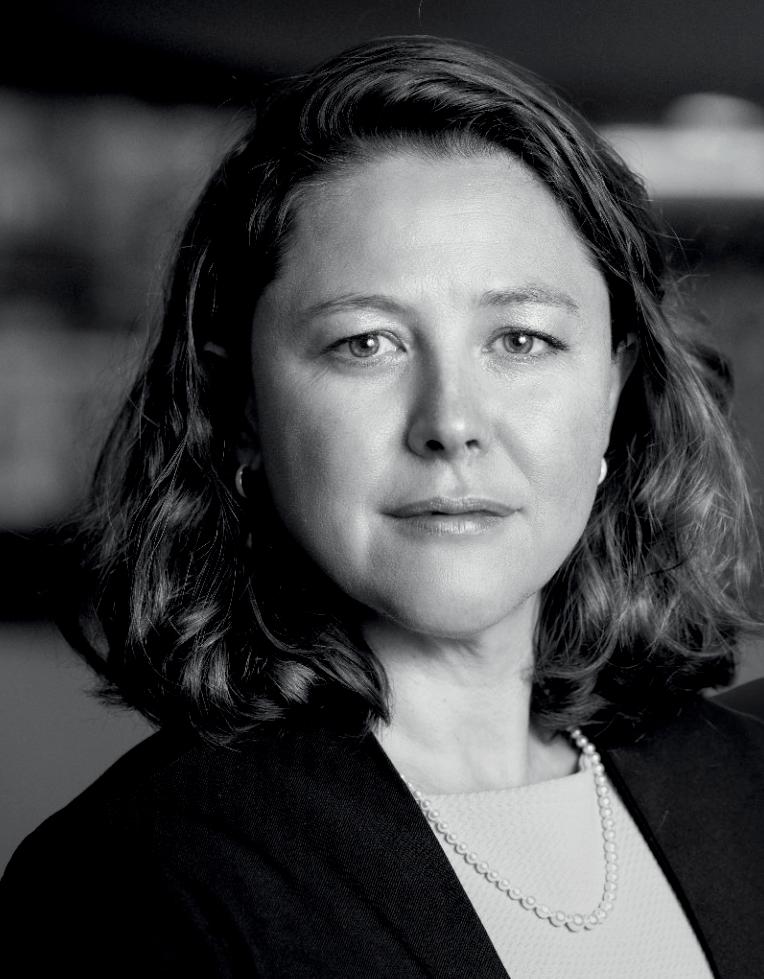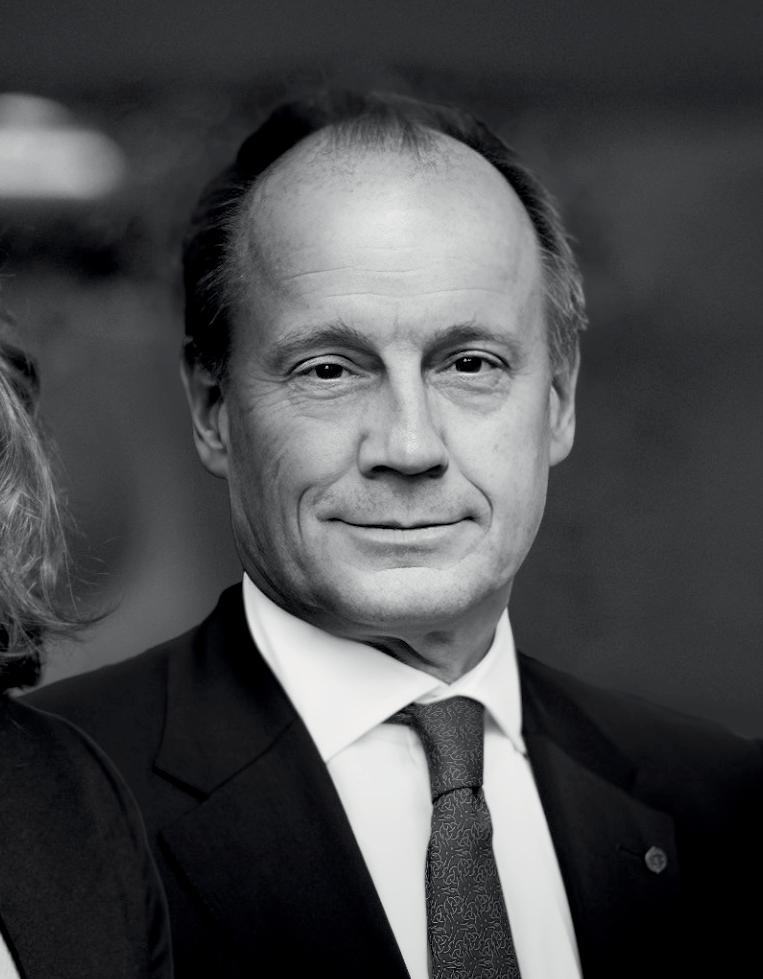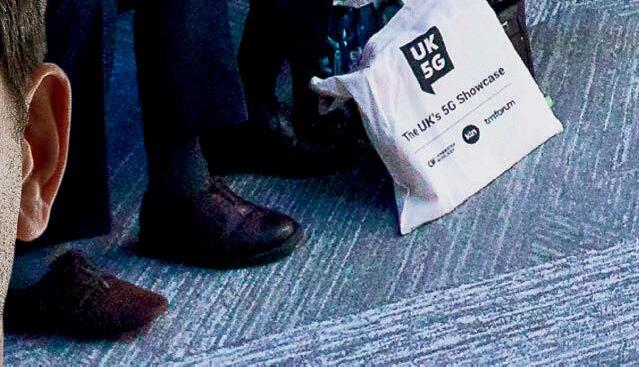
8 minute read
Funding 5G for New Entrants
from UK5G. Issue 10
Innovation isn’t
Three years ago, the UK had one of the lowest percentage of premises with fibre to the home. Today, a massive push from private investors, benefitting from a fertile political and regulatory environment, means the UK has seen one of the biggest increases in construction in Europe, hitting 26.6 per cent. Meanwhile investments in other forms of digital infrastructure are pouring in to contribute to one of the most intense efforts to create a network fit for the digital future. This has required new entrants, new business structures and new financing structures.
Advertisement
New market entrants
Continuing growth in demand for connectivity has put pressure on the balance sheets and funds of major mobile operators and the fixed line operators, who have seen margin squeezed as they have found it difficult to capture share of revenue from the over-the-top services. To some extent this funding gap has been filled by a range of new market entrants. While it is not easy to identify all of those now looking to install fibre and related apparatus, some guidance can be found through an analysis of the applications made to Ofcom for the grant of Code Powers over recent years: The results are striking both in terms of the wide range
Code Powers Categories
of categories of applicant but also in the extraordinary growth in number since 2018.
Code Powers allow the holder considerable assistance in dealing with the regulatory and financial hurdles of negotiation of access to install equipment for communications purposes. They have been fairly recently revised to take account of changes since 2003 and are under further review to ensure provisions strike the right balance between the rights of network operators and builders on the one hand and landowners and commercial property operators on the other; this is a complex and at times hotly disputed area.
One very observable factor is that the number of applications for Code Powers has increased very substantially over the last five years. This reflects the bigger picture which is that both fibre to the premises and 5G are likely to be made up of networks of networks. The first reason for this is the investment squeeze mentioned above. The second is the technology piece: the characteristics of 5G mean different types of installations are needed for different applications and therefore the “one size fits all” approach which worked both for 2, 3 and 4G and for broadband has been supplanted by integrators who assemble a range of solutions to provide a comprehensive service. This can be analgised to reflect the volume of systems integrators who did similar bringing together of various services and components in relation to information technology services.
New Business Structures
Code Powers applicants 2018 to 2022 broken down by category. While some are subsidiaries or special vehicles of existing substantial operators, under the code “N National”, many others are local fibre operators set up to meet demand in quite small localities. Yet others are applied for by real estate owners themselves looking to build infrastructure which they can market to their tenants, and others to the providers of integrated services.
The new delivery mechanisms, local provision, integrators and the network of networks, have driven much ingenuity and rapid development in the financing structures used. We have seen increased separation of networks from services, while the regulators are focusing on service-based competition rather than network competition which has been their primary interest for many decades. It is increasingly likely that neutral host operators, Connectivity-as-a-Service and integration of various services into a connectivity offering, will constitute a significant part of the market for delivery of advanced gigabit connectivity. The challenge is how to finance them. These kind of assets are capable of supporting a lower cost of capital than a retail telco operation in circumstances where they are set up in separately owned vehicles which can be security for lower cost financings. For example, there is no UK mobile network operator which has not entered into financing structures at least for its towers and also related equipment; likewise, data centres are the subject of increasingly sophisticated financing. Independent tower operators are now the order of the day and some have very sizeable market shares and broadband coverage.
What are Code Powers
The “Code” in Code Powers is the Electronics Communications Code: Rights, granted by Ofcom, to companies building infrastructure. Ofcom describes them saying “Code powers enable providers of telecommunication services to construct infrastructure on public land, take rights over private land, with the agreement of the landowner or by applying to the County Court. It also conveys certain immunities from the Town and Country Planning legislation.” Licences cost an initial £10,000, with an annual charge of £1,000.
New financing structures
So, to fund the new market entrants and the new structures new financing arrangements are finding their way to the market.
Beyond the political declarations to achieve nationwide gigabit by 2025 and the £5 billion subsidy package to assist with the harder to reach areas, building the network of the future is mainly left to the private sector. And private funders have responded with gusto with every fund raise (be it equity or debt) attracting multiple investors in a highly competitive environment.
The industry has seen the arrival en masse of interested infrastructure funds and financiers, and now pension funds and institutional investors, with longer investment horizons. These are a good fit for the nature of digital infrastructure as an asset akin to a utility. There is an alignment of the stars between the need for large investments such as infrastructure funds can deploy and the appetite of such funds for the industry, all the more so when more traditional investments like PPIs are waning. In fact, telecoms are now featuring as part of the “core” assets for infrastructure funds. These investors, who are relatively new to the sector, are moving in alongside more traditional corporate finance providers. The immediate advantage for companies seeking financing is access to a wider pool of funds. In addition, the mixing of the sources of investment has led to more flexibility and creativity in financing terms and arrangements, borrowing elements from corporate and leverage finance and elements from project finance. Hybrid financing products are thus emerging with features pertaining to both fields and playing to the appetites of parties now investing in parallel.
There are two additional characteristics of the market. First, as yet, there is little commoditisation. Instead, financing products and transactions are able to be tailored to the specificities of each infraco, their business models and challenges. This flexibility has been crucial to the successful provision of financing to the multitude of players. Second, and this is particularly pronounced in the UK, although there is no commoditisation, there is a growing trend for the balance to tip more heavily towards the corporate and leverage finance side.

But this is not without challenges. One of the biggest challenges is the recent awakening of the incumbents, in particular BT Openreach, in the fibre to the home race. With a stated ambition to reach 25 million homes by December 2026, BT Openreach is currently reported to build at a speed of over 50,000 homes per week. In this light, investors are seeking increasing reassurance as to strategies towards incumbents and to understand the risk that this represents for their investment.
Meanwhile, although the regulatory environment is relatively favourable in the UK to foster infrastructure competition and, equally importantly, stable for the medium future, concerns are mounting regarding enforcement, in particular following the incumbents’ recent moves.
More fundamentally, the general feeling is that the regulator needs to catch up and refocus on whether there is service-based competition to the end user. This would avoid over-building and create renewed incentive for investors in infrastructure.
UK Telecoms has also not been immune to foreign investment control legislation, the National Security and Investment Act 2021 entered in force on 4 January 2022. Time will tell whether this will impact transaction timing and process like its continental equivalents, especially where foreign funds are involved.

In spite of the challenges, the UK remains a very attractive market for digital infrastructure and there is continuous headline-grabbing news of investments in the sector.
Conclusion
These are very exciting times for those investing in the communications infrastructure space. Market conditions have resulted in significant innovation from use of providers and operators, and have also seen the availability of competitive and creative funding. These are very important developments at such a crucial time in the provision of gigabit connectivity across the UK. An exciting while challenging area for all involved; the potential upside is substantial.
Companies looking for legal support and advice on code powers, financing, network sharing or any aspect of deploying telecoms infrastructure can find more details at https://bit. ly/3OpNsyM or contact Chris Watson at chris.watson@cms-cmno.com or on 020 7367 3701
The combination of talks and exhibition worked well with attendees able to dip in and out of talks, and then follow up with some of the speakers when they returned to their stands.


The organisers faced the challenge that the event was planned at short notice, with most of the projects focused on their final delivery and reports, yet all the projects took exhibition stands. For many, both those working on the projects and the strong contingent of DCMS visitors who have had their heads down focusing on their individual deliveries, it was a chance to learn about the diverse collection of use cases supported by the work being done by other consortia.
Mat Sears, Corporate Affairs Director, BT (EE), said: “EE is on an aggressive path to netzero by 2030, switching to renewables and decarbonising its buildings. We know what benefits these networks enable: in 2020, we helped our customers avoid 13 million tonnes of carbon, which is the equivalent of three million homes. This will have increased in 2021 and 20222. 5G allows for an impressive spectrum and a reduction in gigabytes sent across the network. It’s been great to get involved with 5G use cases, such as the Green Planet experience, which is a brilliant environmental education programme.”
Attendees heard directly from a diverse collection of speakers from around the industry which provided an unparalleled opportunity to learn from those on the 5G frontline.

A series of panels celebrated and explored the significant value opportunities 5G brings across a range of sectors and both rural and urban areas; this included key findings and insights shared from across the UK’s 5G ecosystem.
The event explored what the projects had achieved through the 5G Testbeds and Trials programme, sought to identify investment opportunities, and reach consensus on the steps now necessary to take the UK from innovation to adoption.


Julia Lopez MP, Minister of State for Media, Data and Digital Infrastructure, DCMS was in attendance and spoke on behalf of DCMS for the day two “Looking Ahead” panel. The session took a forward look at how the development of policy and regulation of mobile telecoms will create future new opportunities for economic growth and societal benefit. Lopez said: “5G will transform the UK and world-class resilient digital infrastructure is really going to be at the heart of it all. The government is going to be spending £250 million over the next three years on diversification, focusing on security and switching off 2G and 3G to make it easier to innovate.” She added: “We are taking a real-world lead. The UK’s telecommunications network industry is placing emphasis on collaboration, with up to £10 million from the government building on the terrific work of Future RAN and SONIC Labs. Utilising 5G and digital infrastructure will future-proof our economy.”









